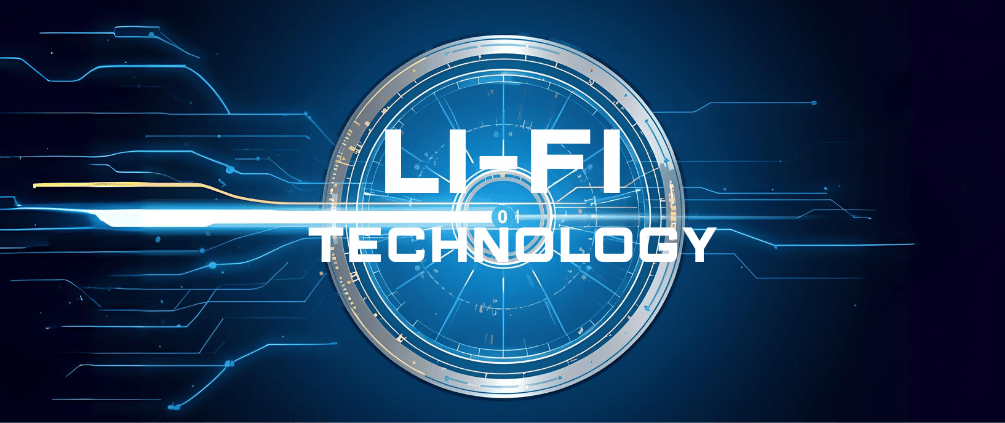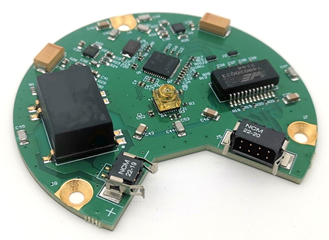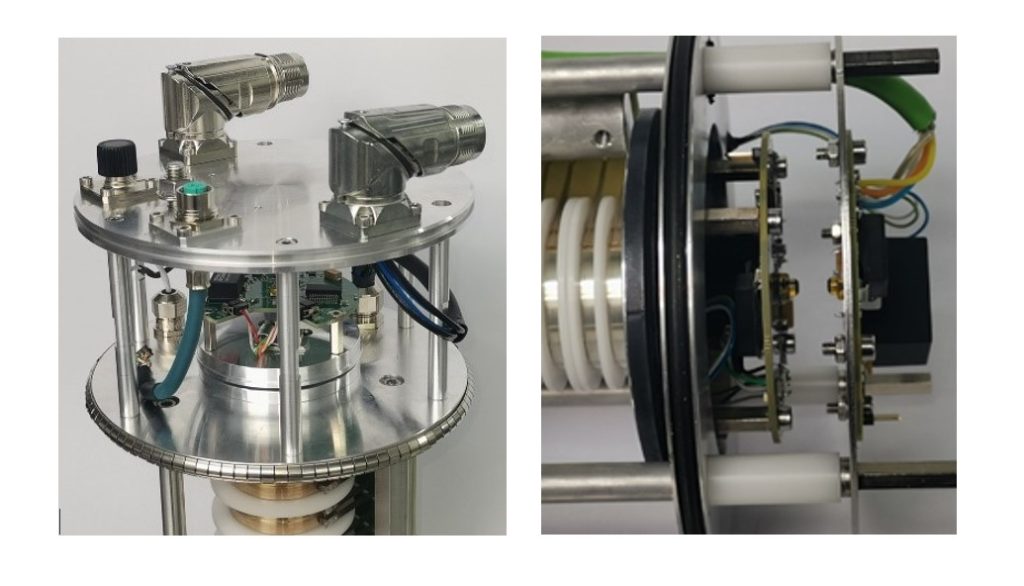The exponential growth in connectivity needs is putting pressure on current communication technologies, which are mainly based on radio waves (Wi-Fi, 4G, 5G). In response, Li-Fi (Light Fidelity) is emerging as an innovative and high-performance alternative. Specifically, this technology uses the light spectrum—visible light or near-infrared light—to transmit data at very high speeds.

The technical principles of Li-Fi
Li-Fi operates by modulating the light intensity emitted by an LED or laser source. These variations, invisible to the human eye, are detected by a photodetector, which converts them into electrical signals.
As a result, systems achieve particularly high transmission speeds, already demonstrated in laboratories at tens of gigabits per second.
In 2023, the IEEE 802.11bb standard was introduced to regulate the development of Li-Fi, positioning this technology within the Wi-Fi family, with speeds of up to 9.6 Gb/s.
Other standards, such as ITU-T G.9991, are already in use in industrial and aeronautical contexts.
Advantages of Li-Fi
- High bandwidth: the light spectrum is approximately 10,000 times wider than that of radio waves, offering considerable potential for massive data transfers.
- Electromagnetic immunity: Li-Fi does not emit any RF waves, making it compatible with sensitive or regulated environments.
- Physical security: since light cannot pass through opaque walls, the natural confinement of the signal reduces the risk of interception.
Limitations of Li-Fi
- Line of sight required: Transmission requires direct or reflected alignment between the transmitter and receiver.
- Limited range: Li-Fi only covers the area illuminated by the light source.
- Dependence on light source: Lighting must be active to enable communication.
Li-Fi applications in industry
Li-Fi’s unique characteristics make it suitable for environments where radio communications are limited or unreliable:
- Aeronautics: high-speed transfer between onboard systems, without interference with avionics.
- Space and defense: secure and confined communications, independent of RF signals.
- Industry: stable connectivity in complex or high electromagnetic density environments, such as production sites or wind farms.
Strategic application
The Contactless Video solution is designed for a wide range of critical applications:
- Light and heavy armored vehicles: 360° surveillance, targeting systems, real-time threat management.
- Drones and aircraft: stable HD transmission even in electromagnetically disturbed environments.
- Naval and coastal surveillance systems: Gyro- stabilized cameras, continuously rotating EO/IR sensors.
- Industrial and oil infrastructures: where the cohabitation of video transmission and fluids is often unavoidable.
EVERAXIS’ contactless Li-Fi solution
As a global specialist in rotary transmission systems, EVERAXIS has developed a contactless Li-Fi rotary link by LED that eliminates the bandwidth limitations encountered with traditional compact slip rings.
- Throughput: up to 5 Gbps full duplex, with latency of less than 2 microseconds, ensuring near-instantaneous transmission.
- Ultra-compact format: maximum diameter of 80 mm, making it the most compact contactless solution on the market for transferring Ethernet, video, or other digital data signals.
- Simple integration: unlike capacitive contactless solutions, this technology does not require a system with a borehole, as the LEDs must be perfectly aligned.

Applications types
o Industrial packaging: accurate and rapid data management in bottling machines.
o Wind energy: reliability and high speed for monitoring and controlling rotating systems.
This solution stands out for its ability to provide wear-free optical transfer while integrating into compact and demanding environments.

Unique expertise at the service of innovation
EVERAXIS has been mastering optical transmission for several decades with its FORJ technology (Fiber Optic Rotary Joints), as well as hybrid rotary transmission (electric and optical).
The integration of Li-Fi is a natural extension of this expertise:
- Mastered optical technology: Li-Fi and FORJ share the same principles of light transmission, with similar requirements in terms of alignment and optical stability.
- Reliability in critical environments: EVERAXIS products are designed to operate in extreme conditions (space vacuum, high rotational speeds, vibrations).
- Customized engineering: ability to design solutions tailored to the specific needs of each sector—aerospace, defense, medical, or energy.
Li-Fi, a complementary technology
Li-Fi does not replace radio technologies; instead, it complements them for high-bandwidth, physically secure, and EMI-compatible applications. Thanks to its unique expertise, EVERAXIS supports customers in evaluating, integrating, and industrializing solutions based on light as a data carrier.
Every industrial, aerospace, or defense environment poses unique constraints. Our teams collaborate with clients to design optical or hybrid rotating systems that incorporate Li-Fi technology and meet technical challenges. Contact EVERAXIS today to discover how our solutions enhance transmissions in the most complex environments.
Want to find out more?

